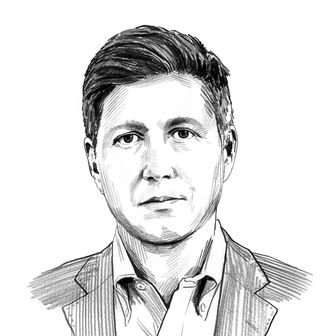
Banks might be tightening the leash on credit and not allowing small businesses to garner much-needed loans, but rest assured the Yankees are not a small business.
Last week, in a video featuring terrifyingly reconstructed Cowboys owner Jerry Jones and a ghostly George Steinbrenner, the Yankees announced they were joining the other America’s team to form Legends Hospitality Management. It’s a “concessions, catering, and merchandising services” company that will provide food, beer, and ThunderStix to Yankees and Cowboys fans. The company—to be run by the former president of Pizza Hut—came to life after a $100 million loan was put together by Goldman Sachs. This on the heels of $943 million in tax-exempt bonds that allowed the team to build the new Yankee Stadium (and the IRS just cleared the way for another $366 million). That’s not counting the $225 million the Yankees raked in to build three parking lots.
All of which is to say that while sports itself might not be recessionproof—David Stern is cutting jobs from the NBA, and in Kansas City, they’re giving out free gas with Royals ticket purchases—the Yankees remain blissfully, necessarily so. If you would like to buy one of the new stadium’s $850,000-a-season luxury boxes, you’re too late: They’re all gone. (If you hurry, you can grab one of the seven remaining $600,000 bargain-basement models.)
This is not unique around these parts. Last week, the Jets—whose Favre-led playoff push is dangerously close to being over before it begins—sold two seat licenses through StubHub.com for its “Coaches Club” field-level seats for $65,100. The Mets have sold all 49 of Citi Field’s luxury boxes, ranging from $250,000 to $500,000 apiece. Heck, even Rutgers is expected to rake in $2 million for the naming rights to their renovated stadium, and they’re not even going to make a bowl game this year.
But nobody knows how to rake in the cash like the Yankees. In addition to opening up new revenue opportunities, like the Legends Hospitality deal, as well as enjoying the influx of cash from the new stadium, the Yankees are masters at finding ways to avoid expenses. Deep breath: The city is razing land near the waterfront and paying for new parks to be built nearby. The team isn’t paying rent or property taxes on the stadium. State taxpayers are shelling out $75 million for parking garages, and the MTA and the city are putting up $91 million for a new Metro-North station. Most important, the money the Yankees are paying for the construction is deducted from the yearly payments they make to baseball’s poorer teams through revenue sharing. These revenue-sharing payments, along with MLB Advanced Media (which brings in $450 million a year and is co-owned by all 30 teams), are among the reasons teams like the Rays and Brewers are far more competitive than they’ve been in years. And now those teams are helping to pay for the Yankees’ new stadium. Only in Major League Baseball could the Yankees figure out a way to impersonate a welfare mother. (Thanks to fieldofschemes.com for help with all the money crunching.)
As much as these figures and prices might inspire old-time fans to grumble about the good ol’ days—back when you could take your family to a ball game, buy them all beers, and spend no more than a couple of seal pelts and some random trinkets—the rest of us have made our peace with this: New York is one of the most expensive cities in the country to see a baseball game because if we don’t pay, someone else will. So we stay at home and watch the yes network (estimated valuation: $3 billion). Unless Manhattan actually turns into a dust bowl, the Yankees are going to be just fine.
Which is good. Because they’re going to need every cent they can get.
At the end of September, the Yankees re-signed general manager Brian Cashman to a three-year deal that will reportedly pay him $2 million a season (as much as backup catcher Jose Molina, if you’re curious). Cashman, a lifelong Yankees employee who started as an intern, was rumored to be considering jobs elsewhere but returned, in part because leaving now would brand him in the press as a failure, the balding short guy who’s always shaking hands at press conferences with men he’s just made absurdly rich but will never ultimately bring a title back to the Bronx. The pattern started with Mike Mussina in November 2000 and has since included Carl Pavano, Randy Johnson, Jason Giambi, Gary Sheffield, Kei Igawa, and, of course, Alex Rodriguez.
What’s interesting about Cashman is that one senses he resents simply shelling out Steinbrenner Bucks to whichever hot new free agent happens to call. Cashman is close friends with Red Sox general manager wunderkind Theo Epstein, who has built the Red Sox into the envy of professional sports. He has done this by investing in the farm system and recognizing that leveraging seasons five years away for an ungallant gallop toward an unlikely postseason today is exactly what landed the Yankees in trouble. Epstein has the payroll, sure, but he runs the team as if he didn’t. The Red Sox featured five players 30 or younger in Game 7 of the ALCS, most of whom are under team control for the next several seasons. That’s the smart way to run a team. Cashman would love to do it.
Two problems. One: Cashman works for the Steinbrenners, who, using the same kind of logic that turned the Knicks into a horror show, consider a season without a World Series title worthy of the racks. But two, and more important: Cashman had his chance. Before last season, Cashman talked about keeping payroll down, trusting his young players, letting the next generation of Yankees take over … essentially acting like Epstein. (Or, for that matter, how the Yankees acted in the early nineties, when a recently reinstated and chastened George Steinbrenner held on to prospects like Bernie Williams, Derek Jeter, and Mariano Rivera.) Cashman had his plan in place. He didn’t need a $200 million payroll to field a winning team.
Except, of course, he did. Phil Hughes and Ian Kennedy were supposed to be rotation anchors; each imploded, leaving gaping holes filled by the likes of Brian Bruney, Darrell Rasner, Kei Igawa, and Sidney Ponson. (And later, ahead of Cashman’s timetable, Joba Chamberlain.) Robinson Cano and Melky Cabrera dropped off dramatically, adding more credence to the notion that Yankees prospects are always of greater perceived value to the Yankees than to any other team in baseball. And those acquisitions signed earlier in the decade to back-loaded contracts? They did what aging players do: They got gimpy (Johnny Damon), declined (Jason Giambi), or both (Jorge Posada). Cashman’s grand reconstruction project ended with the Yankees’ failing to make the postseason for the first time in fourteen years.
Which brings us to this off-season. The Yankees are dropping several huge contracts: Jason Giambi, Mike Mussina, Andy Pettitte, Bobby Abreu (who has implied he’d like to return come back, but probably not at a discount), Ivan Rodriguez, and (finally!) Carl Pavano. Pettitte is expected to return, and Mussina might retire, but the rest of those guys are gone, leaving holes at first base, corner outfield, and possibly catcher. (Jorge Posada being healthy for opening day is far from a certainty.) Sure, they could have filled two of those spots with current Rays (and former Yankees minor leaguers) Carlos Peña and Dioner Navarro. But they let them go. And the rotation is a mess of busted options; Chamberlain and Chien-Ming Wang are penciled in, but they come with glaring question marks themselves. (Adjusting to a full-time spot and recovering from injury, respectively. Oh, and don’t let Joba drive the bullpen car.) The Yankees are further away from a playoff spot right now than they were going into 2008. Cashman’s plan hasn’t worked.
So the Yankees, to steal a phrase, are going to have to spend, baby, spend. The only way out of this mess is to do what got them into it. The free-agent market is loaded this year with exactly what the Yankees need in the short term. On a fantasy shopping list, Mark Teixeira would look gorgeous at first base. Orlando Hudson could push Cano into a utility role. C. C. Sabathia, Ben Sheets, and old tormentor Derek Lowe would be all too willing to cash in and head to the Bronx. If the Yankees are feeling particularly frisky, they could even bring Washington Heights’ Manny Ramirez back home. All of these are options. They’ll probably even take one or two of them. The problem is that, to solve all the Yankees’ short-term problems, they have to do almost all of them.
This, obviously, is not what is best for the long-term health of the Yankees franchise. Ideally, they’d resist overpaying for “name” players and promote from within. But the young players just aren’t there and game-ready; Cashman hasn’t fixed that problem yet. There is no time for that. There’s a new stadium opening, the team has fallen behind the Red Sox and the Rays (and the Blue Jays are closing), and Yankees fans are unlikely to tolerate missing another postseason. Sure, it’ll leave the team hamstrung with awful Pavano-esque contracts in a few years. But they might have no choice, unless they want to throw Kennedy and Hughes to the wolves again. And hey, fans, wouldn’t it be fun to see Manny in pinstripes? It’d certainly drive the papers nuts.
Teams work within their own constraints. The Rays had no money for payroll, so they built from within, and now they’re in the World Series. The Yankees have their own constraints; they have to buy their way out of problems. Lord knows they can. Spend, baby, spend. Let’s see how high we can get those luxury-box prices in 2012.
You can write to Leitch at will.leitch@nymag.com.
